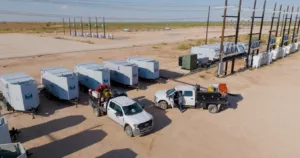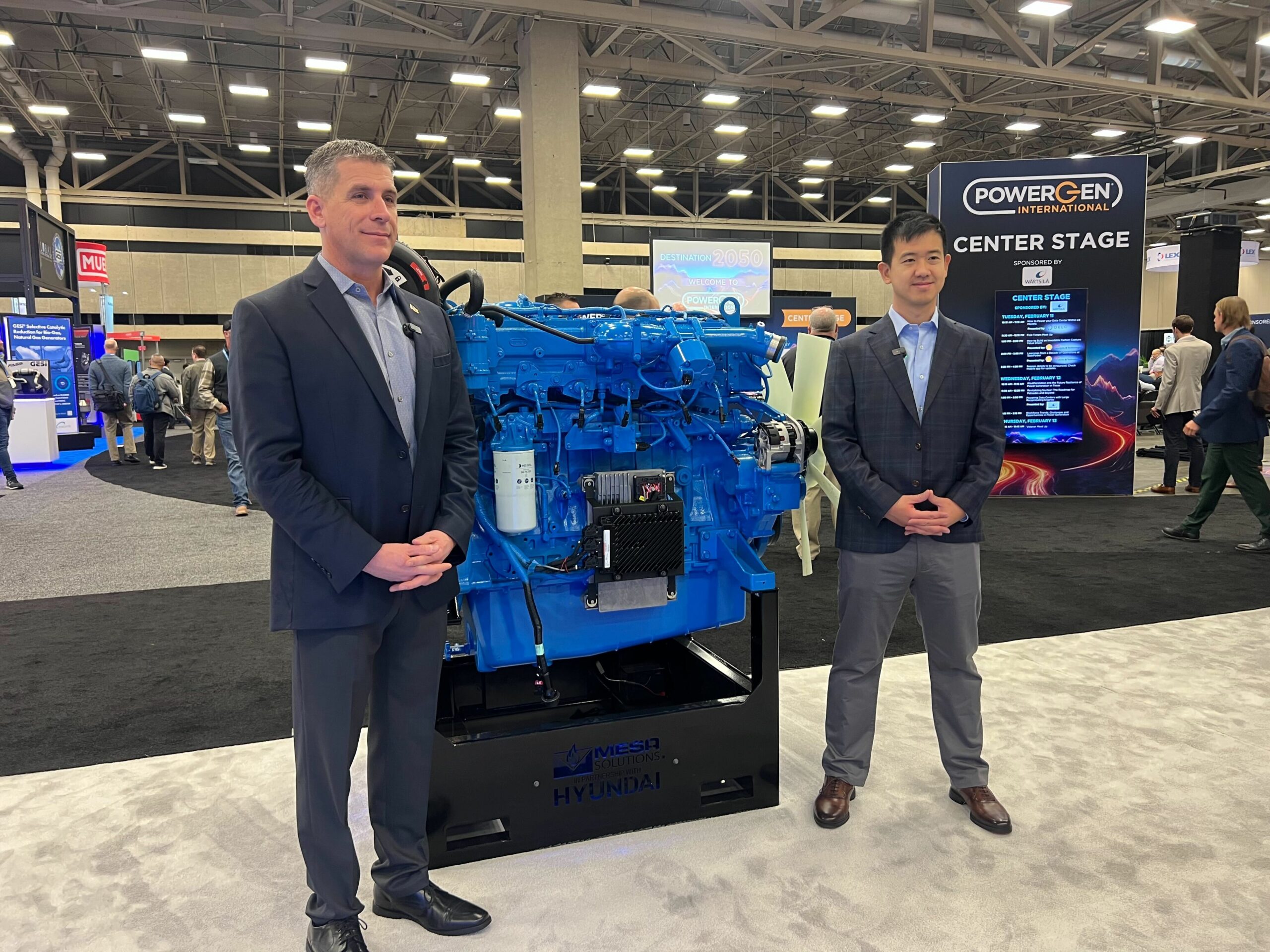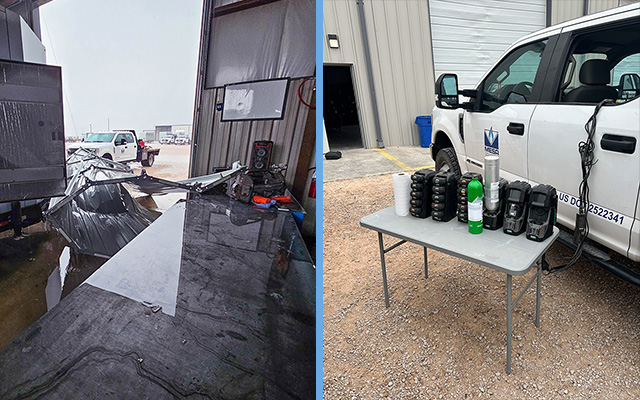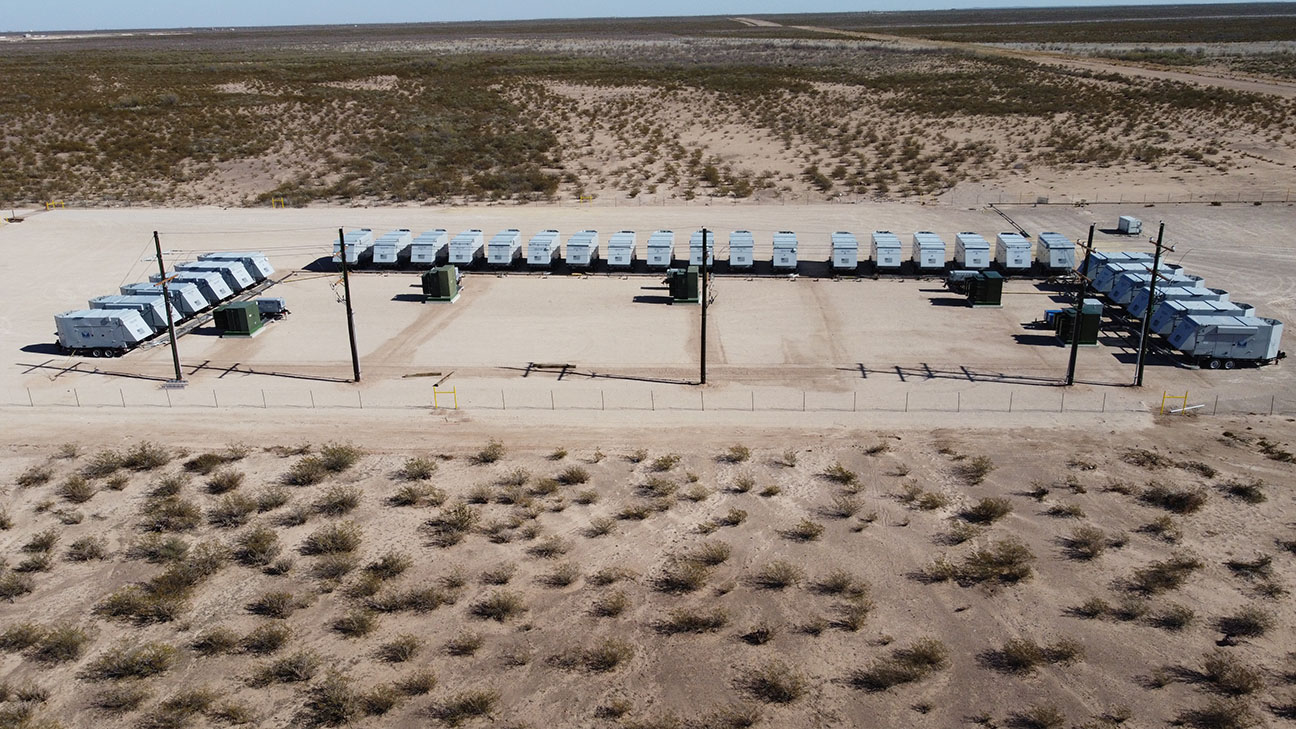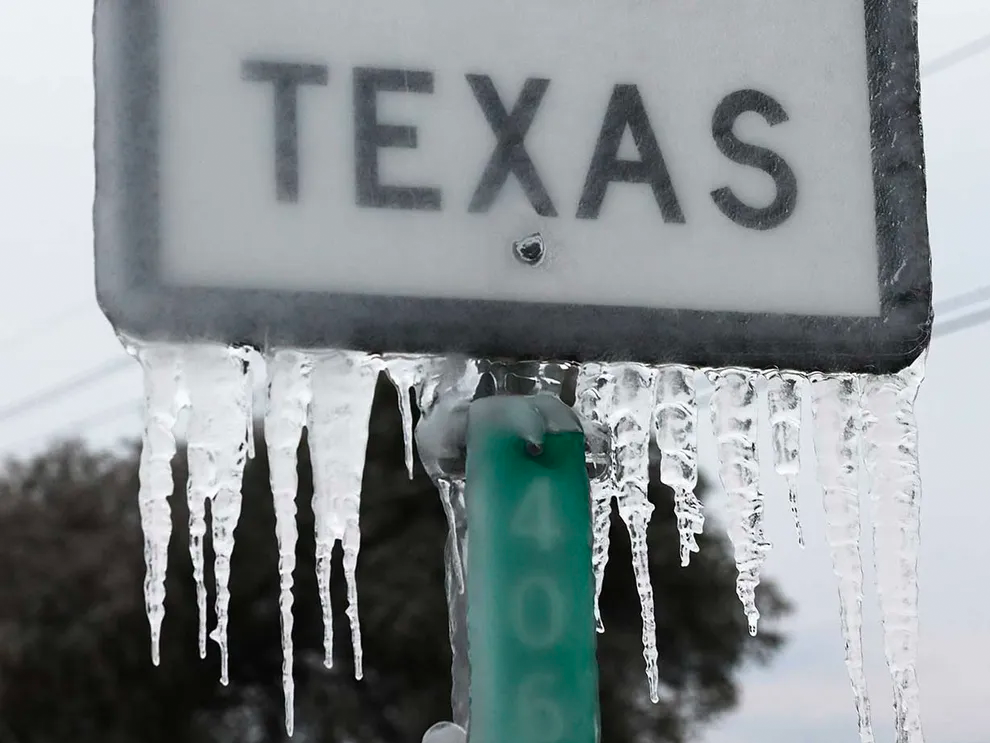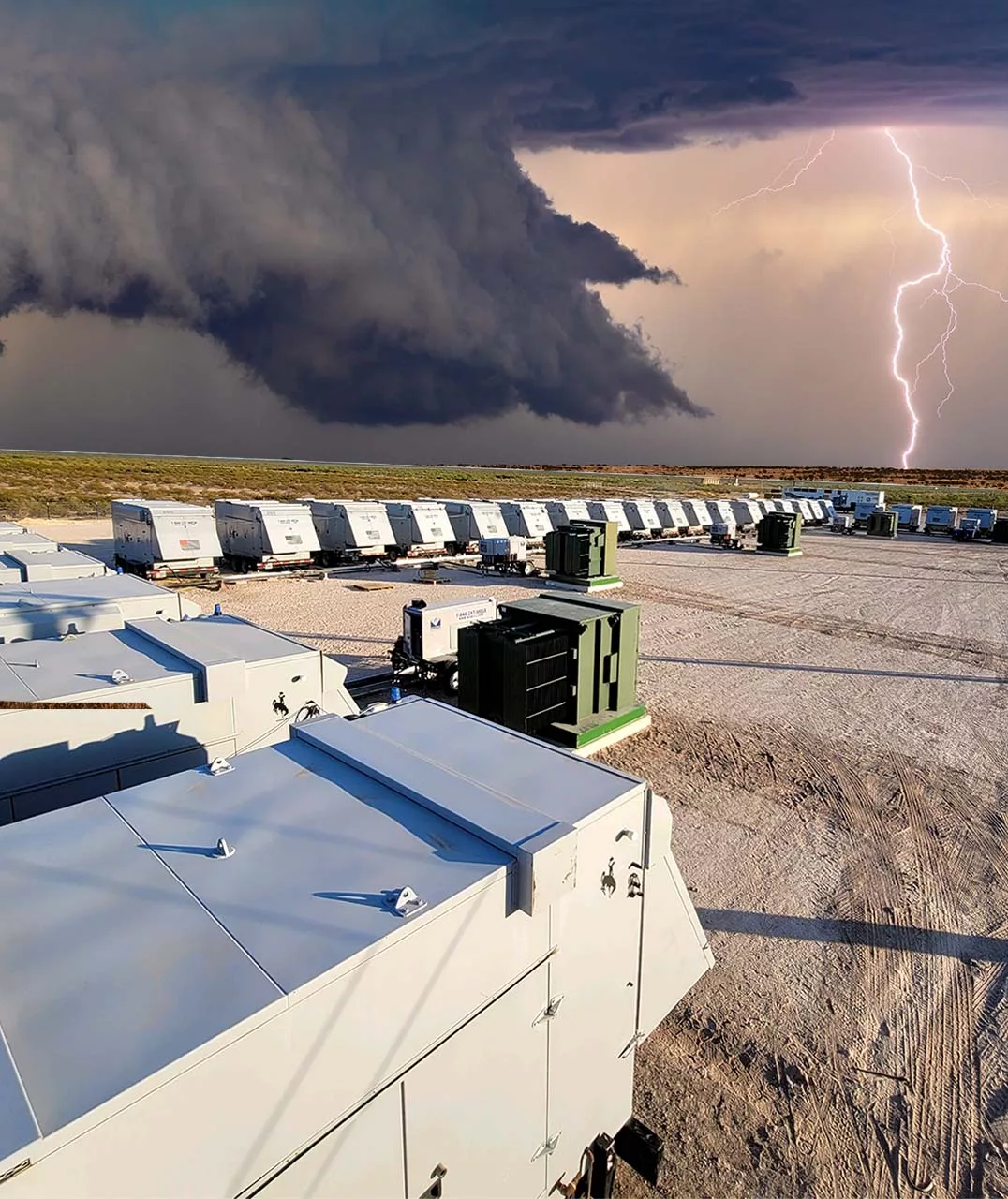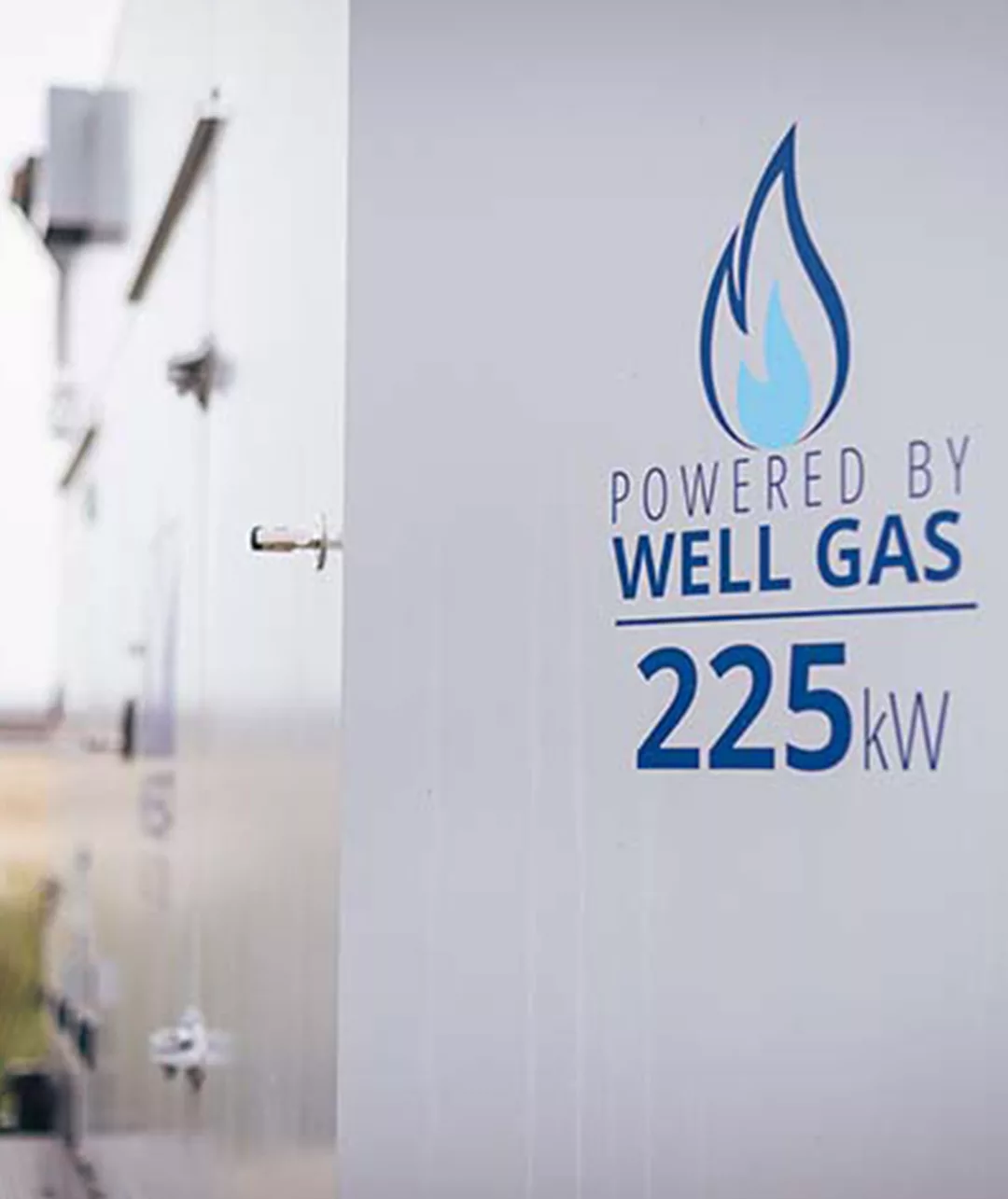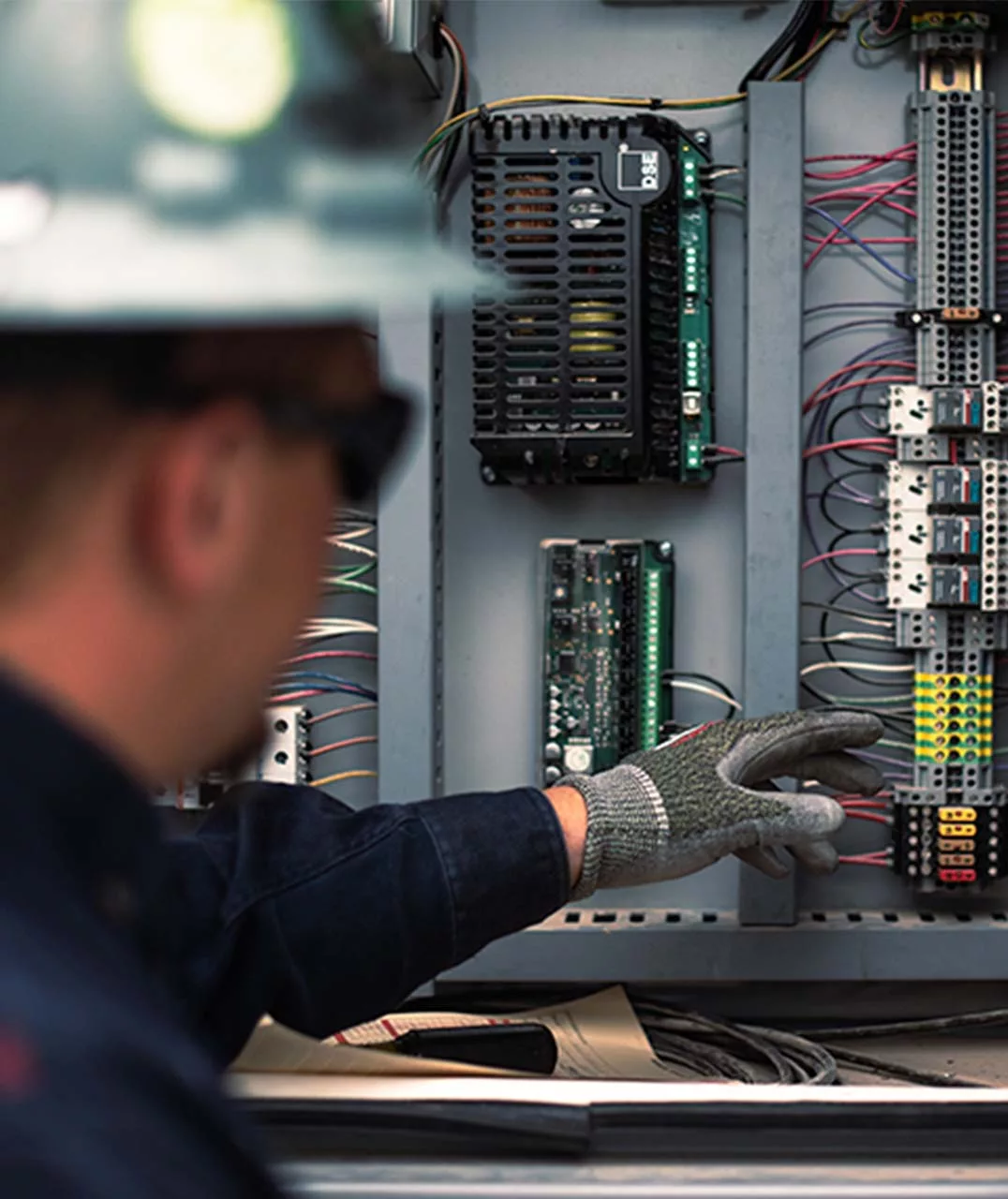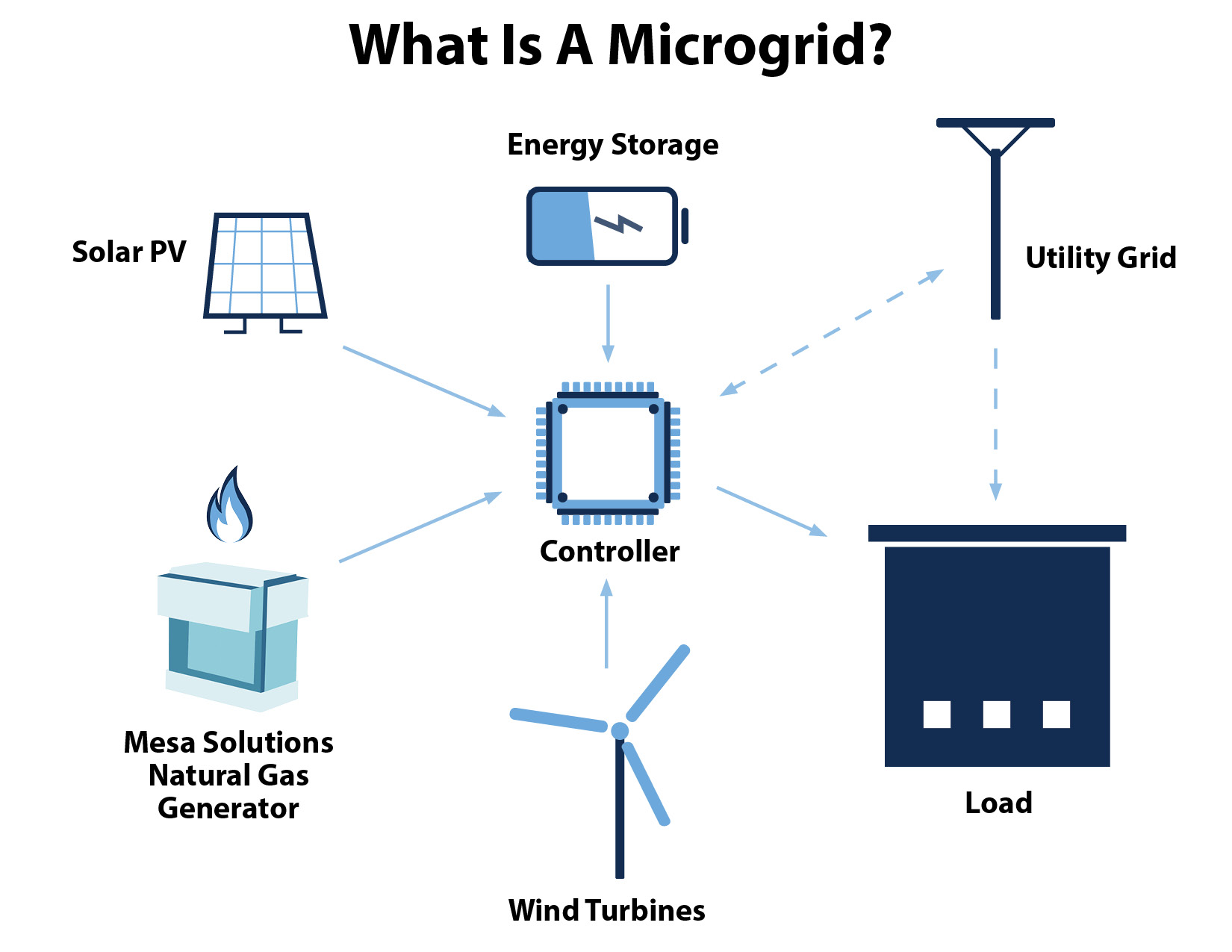 Hospitals, colleges, utilities, and more are resorting to microgrids to ensure their customers and facilities stay powered. A microgrid is like your own electricity grid, run with one or more fuel sources, including natural gas, wind, solar, and more. Microgrids produce power both while connected and disconnected from the main-utility grid and offer the ability to store energy – for when you need it most.
Hospitals, colleges, utilities, and more are resorting to microgrids to ensure their customers and facilities stay powered. A microgrid is like your own electricity grid, run with one or more fuel sources, including natural gas, wind, solar, and more. Microgrids produce power both while connected and disconnected from the main-utility grid and offer the ability to store energy – for when you need it most.
Keeping you powered through storms, states of emergencies, and brownouts is the most known and celebrated benefit of a microgrid, but there’s plenty more reward to be reaped. Discover the remaining, lesser-known benefits below.
Microgrids Help You Become Carbon Compliant
Top Fortune 100 companies, including Apple, Ford, and Verizon have committed to becoming carbon neutral within the next 30-40 years. To meet demanding legislation and aggressive timelines, they have turned to nontraditional sources of energy generation offering low carbon output and resorting to greener fuels to bridge the gap.
Microgrids are the perfect solution with their ability to integrate renewable energy resources. When your microgrid blueprint includes a diverse mix of renewable energy, coupled with a greener, more reliable fuel source like natural gas, you can help save the earth AND stay powered through extreme weather conditions.
Mesa Solutions natural gas generators are used in microgrids across the US, integrated with renewable resources to power campuses and facilities. At times when there is no wind nor shine to power your renewable resources, natural gas generators will kick-in to keep you running – providing prime power and offering you the ability to remain fully off-grid for months.
Microgrids powered with natural gas generators also provide a greener alternative fuel source in comparison to diesel. Natural gas generators emit significantly fewer air pollutants and greenhouse gases (GHGs) than diesel generators. Natural gas emits 95% less nitrogen oxide (NOx), 98.1% less volatile organic compounds (VOC), and 94.7% less carbon monoxide (CO) than diesel fuel.
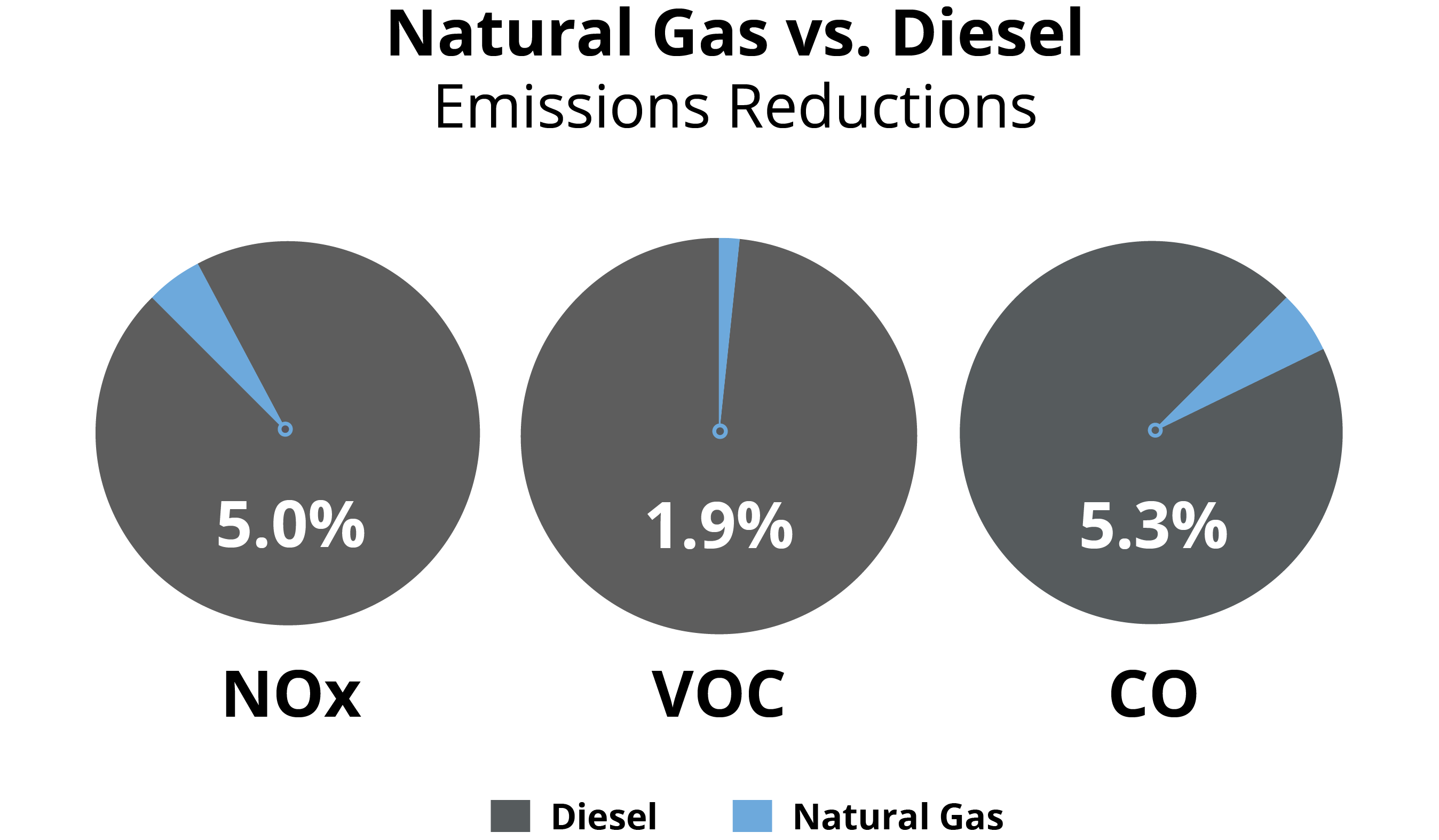
Microgrids Help You Save Money
Microgrids allow you to avoid sky-rocketing utility rates as fluctuations frequently occur due to demand, fuel costs, and power plant availability. Microgrids can adjust to each customer’s demand response, increasing or decreasing the amount of electricity produced depending on the customer’s needs. In addition to demand response, microgrids incorporating several distributed energy resources, such as generators, batteries, and solar PV, are optimal for peak shaving, where the microgrid is activated to draw from owned, stored power to provide electricity and avoid high rates from the main grid during times of peak electricity usage.
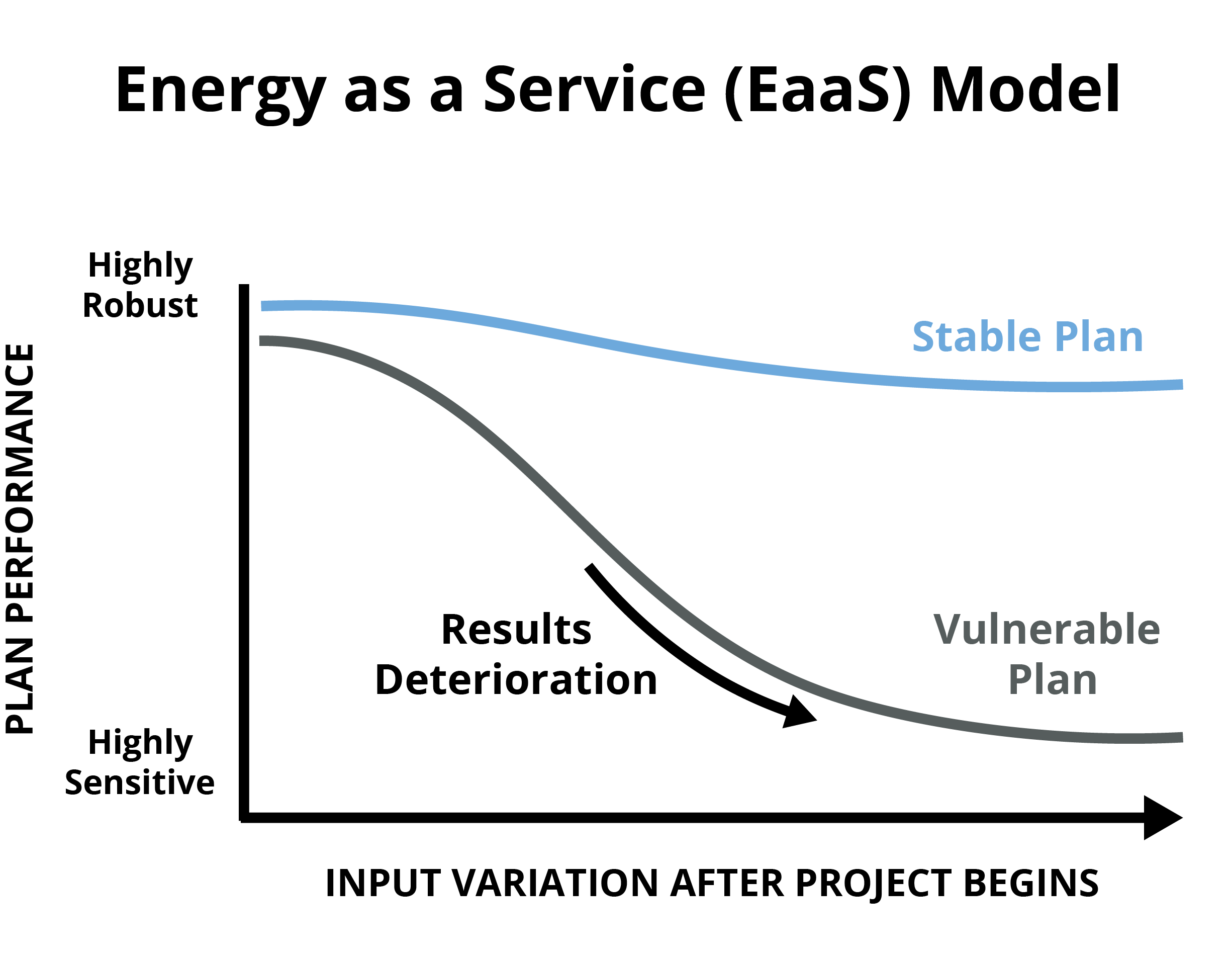 Microgrids integrate a controller system acting as the “heart” to manage and facilitate demand response, peak shaving, and all distributed energy resources incorporated into the microgrid. Controllers come in varying degrees of sophistication and complexity, the most sophisticated systems seamlessly orchestrate power system components, including solar PV, wind turbines, natural gas generators, and energy storage devices while mining forecasted data to calculate a future resource mix for the microgrid.
Microgrids integrate a controller system acting as the “heart” to manage and facilitate demand response, peak shaving, and all distributed energy resources incorporated into the microgrid. Controllers come in varying degrees of sophistication and complexity, the most sophisticated systems seamlessly orchestrate power system components, including solar PV, wind turbines, natural gas generators, and energy storage devices while mining forecasted data to calculate a future resource mix for the microgrid.
Microgrids also allow Energy as a Service (EaaS), or what is now being called Microgrid as a Service (MaaS). EaaS allows customers to avoid the upfront capital expenditures of purchasing a microgrid by offering a multi-year contract where the customer only pays for energy used while the service provider assumes the risk of ownership for all microgrid equipment. In buying energy from owned fuel sources in the microgrid, the end-user can avoid fluctuating utility costs caused by the volatility of supply and demand of just-in-time fuel sources. Using EaaS, customers reap the benefits of reliable, resilient, renewable, cost-efficient power without the initial capital expenditure.
Whether you are looking for power reliability, cost savings, or to meet aggressive environmental legislation, a microgrid is likely your answer.
If you operate a facility, campus, or utility that may benefit from a microgrid, please contact us to learn more.


